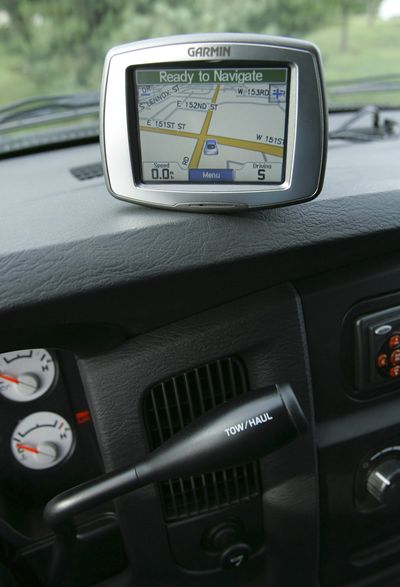The automotive generation gap
Today’s younger drivers have always knows cars with navigation systems power windows and video screens

Not long ago, I gave a ride to a kid in an old car with no air conditioning. It was a warm day, so I told him to roll down the window.
He had no idea what that meant. Having grown up with power windows, he’d never seen a crank handle and didn’t know how to use one. (He’d probably never been in a car without air conditioning, either.)
It got me thinking about all the things today’s kids take for granted when it comes to cars that either didn’t exist or were far less common when their parents were growing up. Here are five ways in which kids experience cars differently, starting with those windows.
Windows and doors: You can still find crank handles on old cars and “very, very low-end cars,” according to Art Jacobsen, director of business development for CarMD.com.
The cheapest, most basic models of the Nissan Versa and Smart Fortwo cars, for example, lack power windows. But they are a standard feature on most vehicles.
“Manufacturers found it was cheaper in the long run to eliminate the hand-crank window option and make all their cars with electric windows,” says Jeff Bennett, an associate professor at Northwood University in Midland, Mich., who’s written textbooks for the automotive industry and worked for years as a Chevy and Toyota dealer.
Another thing that’s increasingly rare: manual locks. Locking each door separately seems like a lot of work compared to one click from the key chain.
Music and games: Change the station! Turn it down! Turn it up! I hate that song!
These conflicts haven’t completely disappeared from car rides, but there are more entertainment options than ever before.
“Most cars now have an audio jack where you can plug in an iPod or any other MP3 and play it over the car stereo,” says Jacobsen.
And if the passengers don’t like the driver’s taste in music, chances are they have their own iPods with headphones.
For kids, DVD players and video games have replaced 20 Questions, GHOST, license-plate math and Geography.
“Kids don’t want to play ‘I’m Thinking Of…’ or ‘I Spy’ anymore,” says Karen Brocoff, a member of the Car Care Council Women’s Board and mother of two. “They just watch movies and play with their electronics.”
Other entertainment options include satellite radio and even satellite TV. Bennett says it all adds up to a huge shift in the way families travel.
“It’s not so much that your car has no more crank-down windows that’s the big difference,” he said. “It’s that Charlie and Millie are in the back seat watching something and not talking to mom and dad – ever.”
Getting lost: How often did your parents get lost, and then get in an argument with each other about being lost? That’s probably something your kids experience far less often than you did growing up, thanks to GPS technology.
Some folks get turn-by-turn directions and traffic updates from their cell phones, some have portable GPS devices, and some spring for a navigational system built right into the dashboard of their vehicle, though that’s still a luxury option.
But Jacobsen notes that navigational technology hasn’t entirely eliminated the experience of getting lost.
“A lot of times my GPS has taken me around in circles, so you still get to have the heated discussions with your spouse,” he says.
Car seats: Remember bouncing around the back seat when you were a kid or sitting on a grown-up’s lap? Maybe you rode shotgun in front while mom or dad drove, or even got to bop around the bed of a pickup truck.
All that’s forbidden now, thanks to rules and recommendations on child safety. All 50 states require the use of car seats for children, and the National Highway Traffic Safety Administration also recommends that children under 13 always sit in back.
Not only can front-seat air bags injure small passengers, but back-seat passengers are less likely to be hurt in head-on collisions.
Once kids have outgrown car seats at age 4 or 40 pounds, the NHTSA says they should use booster seats until they are 8 years old or 57 inches tall, whichever comes first.
The rules have had a dramatic impact on safety. Although car accidents remain the leading cause of death for kids ages 3 to 14, the number of auto-related fatalities among children under 13 has dropped from 3,643 in 1975, to 1,045 in 2008, according to statistics from the U.S. Department of Transportation.
Looking under the hood: Generations of 20th-century kids grew up working on the family car with their dads. No more, says Jacobsen.
“It’s not by accident that manufacturers have designed these computer systems,” he says. “You have to bring the car to them to get even simple things done. Everything is computerized and it’s very difficult without access to the proper tools and information.”
On the other hand, says Bennett, “cars are so much more reliable, so much safer, and so much less maintenance is required. The average individual is much better off today.”